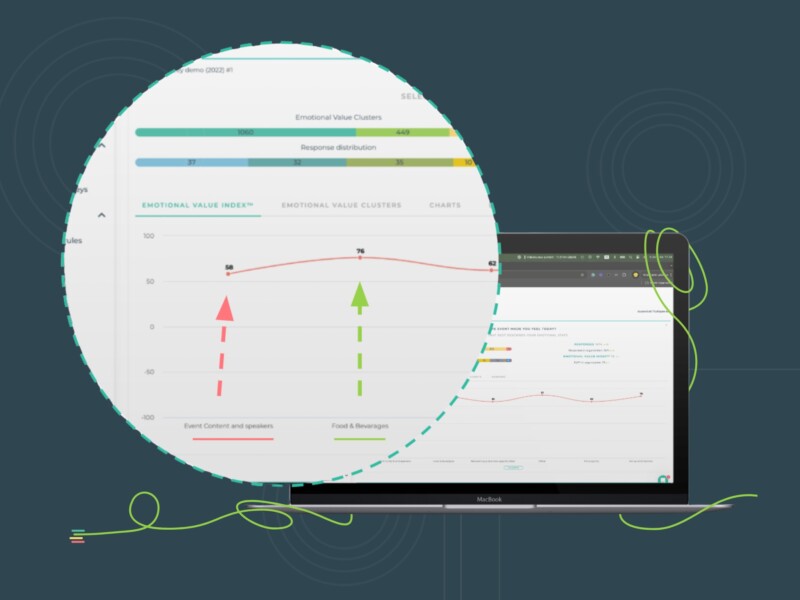In today’s customer-centric business world, prioritizing customers’ perceptions of your business has become more important than ever. The good news is that an increasing number of companies are adopting Customer Experience (CX) as a separate strategy to make improvements to the experience delivered to their clientele. But, only a few companies have been successful in uplifting customer experience by making improvements their customers want.
This is because companies tend to make fatal mistakes when they measure CX. They may not seem significant on the surface level but they can have a trickle-down effect, which can eventually impact the end customer experience negatively. So, here are top 5 mistakes companies tend to make when measuring CX and how you can avoid them easily.
Measuring individual interactions instead of the overall experience
Customer experience is the overall perception that a customer develops as a result of many interactions that occur throughout the customer journey. Therefore, it’s a known fact that a single Key Performance Indicator (KPI) cannot capture the entire picture. KPIs such as CSAT are tied to individual interactions such as inquiry of a product via social media or purchase of a product online. Although you can gain a positive score, it doesn’t necessarily indicate the customer’s overall perception of the brand.
Analyzing CX strategies in silos won’t help you understand how they impact the overall goals and objectives of the organization. If you need a conceptual and accurate reflection of how your CX efforts influence your organizational activities, it’s important to integrate all results derived from different metrics and analyze them together to comprehend the overall customer experience.
Focusing only on customer-related departments to gather data
Data collection and analysis is an integral aspect of measuring CX. If you want to gain a comprehensive result, it’s important to gather data from all the departments in the organization instead of limiting it to departments that directly interact with customers. This is because the end experience that an organization delivers to its customers is the cumulative effort put forth by every unit and department. So, the efficiency and productivity of each of them contribute to better customer experience.
Therefore, don’t rely only on customer support and marketing departments to gather data related to CX. You have to integrate CX-related metrics to Finance, Product Development, and Legal departments as well. The well-rounded analysis you gain from this strategy can help provide an effective customer experience.
Failing to prioritize CX strategies that your company needs
If you are serious about investing in CX and reaping its rewards, you must be willing to finance your efforts without hesitation. But, if you only have limited resources at your disposal, then it’s vital that you identify which aspect of customer experience needs the highest attention at present. As an example, if you want to make improvements to customer support, focusing on measuring its effectiveness should be your priority. So, once you have allocated the required resources to measure, identify, and analyze its shortcomings, you can focus on other aspects.
Setting priorities will help you better manage the customer experience measurement program with improved focus. It also allows you to adopt new CX metrics easily and more methodically.
Drawing conclusions from incomplete information
In order to measure the quality of customer experience in your organization more accurately, it’s important to make comprehensive interpretations. There are instances when it’s too soon to tell why your customer likes/dislikes your brand, especially if there is limited data to analyze and gather information. It could be due to a factor within the organization or a factor external to the organization. Conclusions drawn based on data gathered from a single or limited source can hinder the efficacy of your CX measurement program. You could assess CX inaccurately, which can lead to inaccurate decision-making.
So, as a rule of thumb, it’s important to widen your channels of data collection and look at any aspect of CX from different angles before you evaluate the scope of CX in your organization.
Not being consistent with your CX measuring efforts
A lot of companies start off their CX measuring programs very enthusiastically but after some time, they tend to postpone or drop off the program, especially if the results are not in their favor. If you want to gain sustainable benefits from customer experience, you have to focus on improving CX as well as measuring it constantly to monitor the impact of your efforts.
Measuring CX cannot be a one-off task. You have to keep fine-tuning areas that require improvement and assess the Return on Investment (ROI). Also, the importance of customer experience has to be conveyed to the entire organization, and employees at management levels have to be knowledgeable about it. This way, it becomes easier for the CX team to carry out their activities as there’s more support.



